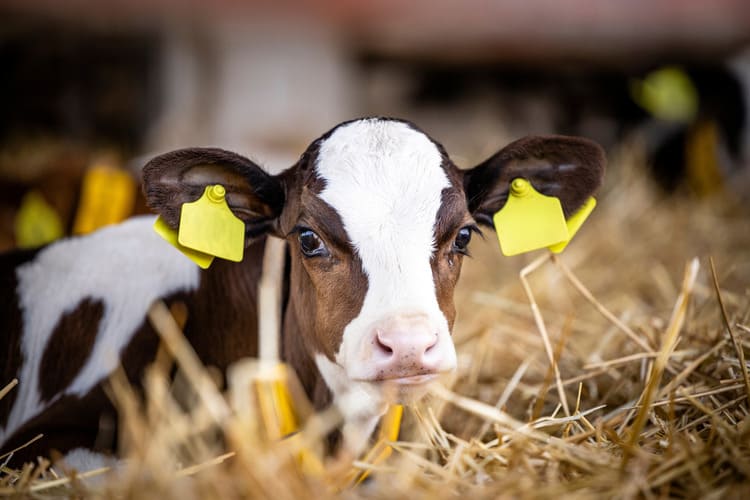Previous studies have shown that the use of additives to enhance intake and immunity at farm arrival could be a strategy to minimize the negative effects of stress and feed restriction during transportation in unweaned calves. Unweaned dairy beef calves are fed low liquid feeding programs to avoid mechanical diarrheas and to enhance the consumption of solid feed to increase growth. A total of 78 dairy beef calves (57.8 ± 1.64 kg) coming from auction market were used to evaluate the effect of various feed additives [FA; comprising palatability enhancers (PE), standardized olive pomace extract (OE), and tributyrin (TB)] added to the milk replacer (MR) and concentrate or only to the concentrate on performance until 1 week after weaning. Calves were distributed in 6 treatments: calves fed MR and concentrate without FA (CTR-CTR; n = 13); calves fed MR without FA and concentrate with PE (CTR-PE; n = 13); calves fed MR without FA and concentrate with complete mixture OE + TB + PE (CTR-COM; n = 13); calves fed MR and concentrate with PE (PEPE; n = 13); calves fed MR with PE and concentrate with complete mixture OE + TB + PE (PE-COM; n = 13); calves were fed MR with complete mixture OE + TB + PE and concentrate with PE (COM-PE; n = 13). At arrival calves were only fed 2 L of MR twice daily at 12.5% and concentrate feed ad libitum. On day 35 of the study, animals were submitted to a social stress challenge, calves within one treatment were mixed for 24 h, and on day 36, calves returned to their home pens and the afternoon milk was removed. On day 42, all calves were weaned, and they were followed until day 49. Data were analyzed with a mixed-effects model. No differences were observed in concentrate intake the first week after transportation. However, an interaction between treatment and time (P < 0.01) was observed among treatments in concentrate intake from day 35 until day 49 when calves were already weaned. The PE-PE and PE-COM calves had a greater (P < 0.10) concentrate intake from day 28 to day 42 than CTR-CTR or CTR-PE calves, while from day 42 to day 49 the CTR-COM was the group of calves with the greatest concentrate intake. Although no differences were observed on final BW among treatments, the CTR-COM calves had numerically greater ADG than the rest of the treatments. In unweaned dairy beef calves with liquid feeding restriction, the mixture of palatability enhancers, standardized olive pomace extract, and tributyrin potentially increases concentrate intake and growth when added in the concentrate feed.

Autores: S. Martí, M. Blanch, M. Devant
Libro/Revista: Journal of Animal Science, Volume 101, Issue Supplement_3, November 2023, Pages 273–274
